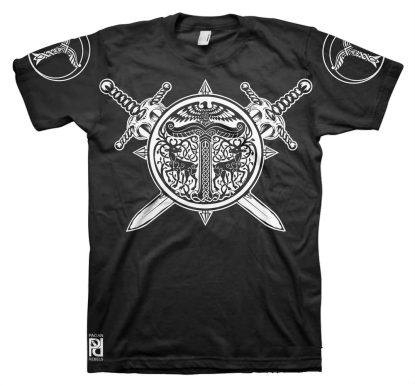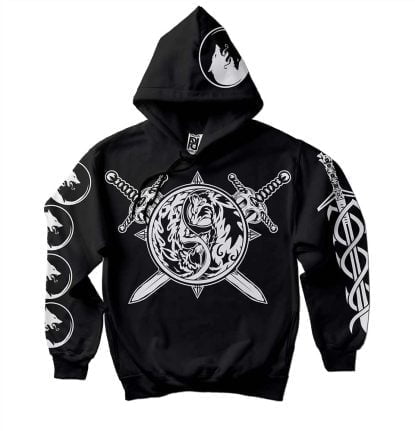Triquetra is a Norse Viking symbol closely connected with the Valknut and Horn Triskelion. Artifacts with Triquetra ornaments are found in all parts of the Viking world, ranging from the comb found in Gnezdovo (near Suzdal, Russia) to the saddle bow from Coppergate (York, England). In Latin triquetra means ‘triangular’ (feminine singular). Initially this word designated any three-cornered figures, but now it is applied to the shape formed by three interlocked semicircles at the place where three circles would overlap. These form three interlocking vesicae piscis (Latin for ‘bladders of the fish’), also called mandorla (Italian for ‘almond’, plural mandorle).
Heathen Triquetra ornaments may be simple (above to the left) or rather intricate (as on the Funbo runestones, Uppland, Sweden, above to the right). The symbolism of the Norse Triquetra is almost certainly related to some heathen religious concepts. However, what exactly it meant to Vikings is difficult to ascertain since at a very early stage Triquetra was also used by Christians to convey their own religious content. For instance, the Triquetra that was struck on the coins by the Christian Norse kings of York most probably was already reinterpreted by York Vikings in the Christian perspective. The same may apply to the silver penny issued by Harald Hardrade (king of Norway from 1047 to 1066).
HAIL PAGAN REBELS!
This is VALHALLA Hoodie premium clothing collection.
Front is BIG LARGE 40cm-16″ length print, back 30cm-12″ length Valhalla logo with print on both sleeves and on hood.
Print technique high quality soft flex print.
| Weight | N/A |
|---|---|
| SIZE | M, L, XL, XXL |
Only logged in customers who have purchased this product may leave a review.
Related products
MEN'S T-SHIRTS
MEN'S T-SHIRTS
MEN'S T-SHIRTS
MEN'S T-SHIRTS



















Reviews
There are no reviews yet.